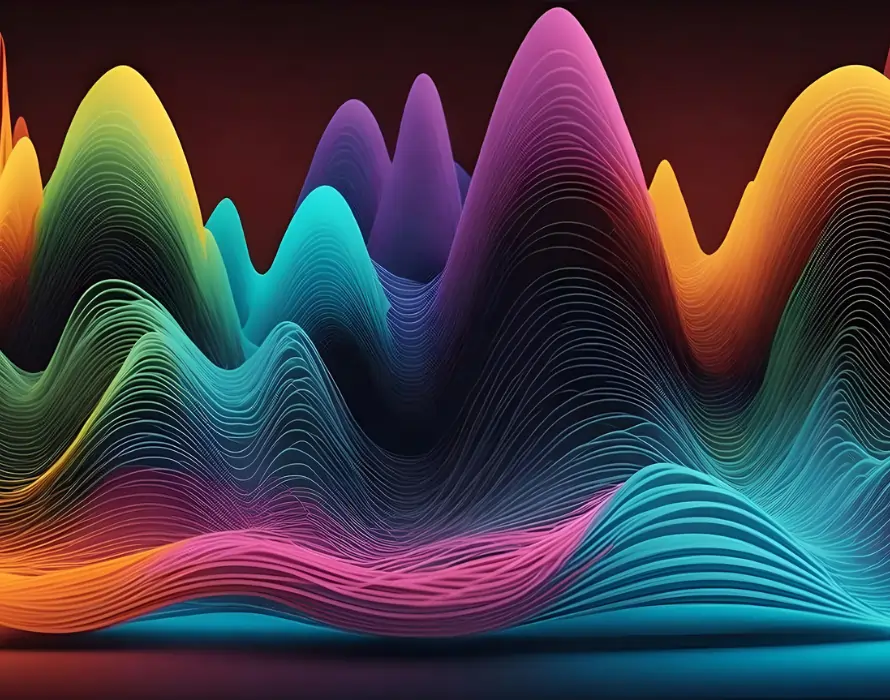Table of Contents
What is the Electromagnetic Spectrum?
The electromagnetic spectrum helps us make sense of the many energy waves constantly flowing through the space around us.
These waves come in all sizes—radio waves are so big they can stretch across an entire football field, while gamma rays are so tiny they’re measured in billionths of a meter.
What’s amazing is that all these waves travel at the same incredible speed: 300,000 kilometers per second, which is the speed of light. The difference between them lies in their wavelength (how long each wave is) and frequency (how many waves pass by in a second). These two factors give each type of wave its unique properties.
The Types of Waves in the Electromagnetic Spectrum
The spectrum is broken down into seven main types of waves, each with unique properties. Here’s how they stack up:
1. Radio Waves
- Wavelength: Longest in the spectrum (up to several kilometers!).
- Uses: Broadcasting music and news, Wi-Fi, and exploring distant galaxies.
- Fun Insight: When you tune into a radio station, you’re literally “tuning” to a specific frequency of radio waves.
2. Microwaves
- Wavelength: About the size of a honeybee.
- Uses: Heating food, weather radar, and satellite communication.
- Fun Insight: Microwaves are also used to study the structure of our universe.
3. Infrared Waves
- Wavelength: Shorter than microwaves but longer than visible light.
- Uses: Thermal cameras, remote controls, and night vision goggles.
- Fun Insight: Every warm object—including your body—emits infrared waves.
4. Visible Light
- Wavelength: The only part of the spectrum visible to human eyes (400–700 nanometers).
- Uses: Lighting, photography, and seeing the world around us.
- Fun Insight: The colors of a rainbow—red, orange, yellow, green, blue, indigo, and violet—are all part of visible light.
5. Ultraviolet (UV) Light
- Wavelength: Shorter than visible light.
- Uses: Sterilizing equipment, detecting counterfeit money, and producing vitamin D in your skin.
- Fun Insight: While too much UV can harm your skin, some birds and insects use UV vision to see things we can’t.
6. X-rays
- Wavelength: Extremely short, small enough to pass through soft tissue but not bones.
- Uses: Medical imaging, airport security scanners.
- Fun Insight: The X-ray was discovered by accident when a scientist noticed it could expose photographic film without light.
7. Gamma Rays
- Wavelength: Shortest and most energetic waves in the spectrum.
- Uses: Cancer treatment, studying supernovas in space.
- Fun Insight: Gamma rays are powerful enough to destroy cells, so they target cancer cells in medicine.
Fun and Interactive Experiments for Kids
Learning about the electromagnetic spectrum doesn’t have to be confined to textbooks. These hands-on activities can bring the concepts to life for kids (and adults too!).
1. Create a Rainbow with Visible Light
- What You Need: A glass of water, a flashlight, and a white surface.
- What to Do: Shine the flashlight through the water onto the white surface. The light splits into a rainbow, revealing the colors that make up visible light.
- Why It’s Cool: It demonstrates how white light is made of many colors, and you get to create your own mini rainbow indoors!
2. Detect Heat with Infrared Waves
- What You Need: An infrared thermometer or thermal camera.
- What to Do: Use the camera to look at objects like your face, a cup of hot tea, or even a pet. Watch how heat shows up as glowing patterns.
- Why It’s Cool: It lets you “see” heat, something your eyes can’t naturally detect.
3. Test Sunscreen with UV Beads
- What You Need: UV-sensitive beads, sunscreen, and sunlight.
- What to Do: Place the beads in direct sunlight and watch them change color. Coat some beads with sunscreen and compare the difference.
- Why It’s Cool: It shows how UV light interacts with materials and how sunscreen protects us from harmful rays.
4. Explore Microwaves with Marshmallows
- What You Need: A microwave and marshmallows.
- What to Do:
- Spread marshmallows evenly on a microwave-safe plate (make sure the turntable is off).
- Heat for 10–15 seconds and measure the distance between melted spots with a ruler. This represents the microwave’s wavelength.
- Why It’s Cool: It’s a delicious way to learn about how microwaves heat things unevenly based on their wavelength.
5. Glow Stick Temperature Experiment
- What You Need: Glow sticks, hot water, and cold water.
- What to Do:
- Place one glow stick in hot water and another in cold water.
- Watch the glow stick in hot water glow brighter but fade faster, while the cold one glows dimly but lasts longer.
- Why It’s Cool: It illustrates how energy levels impact how fast or bright something glows.
6. Build a DIY Crystal Radio (Radio Waves)
- What You Need: A crystal radio kit or simple materials like a coil, diode, and earphones.
- What to Do: Assemble the radio and try tuning into AM or FM signals.
- Why It’s Cool: It shows how radio waves carry sound and lets kids build their own communication device.
Why Understanding the Electromagnetic Spectrum Matters
The electromagnetic spectrum isn’t just about cool experiments—it’s the backbone of modern life. From the GPS in your car to the X-rays at the doctor’s office, these waves power the technology we rely on every day. Understanding it helps kids (and adults!) appreciate how science connects to the world around us.
Encouraging curiosity through experiments and exploration can make abstract concepts like the electromagnetic spectrum exciting and tangible. So grab some marshmallows or a prism, and dive into the wonders of this invisible world together!


